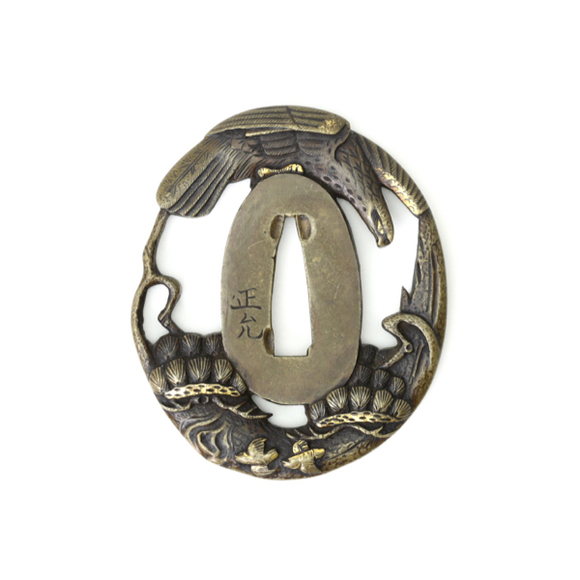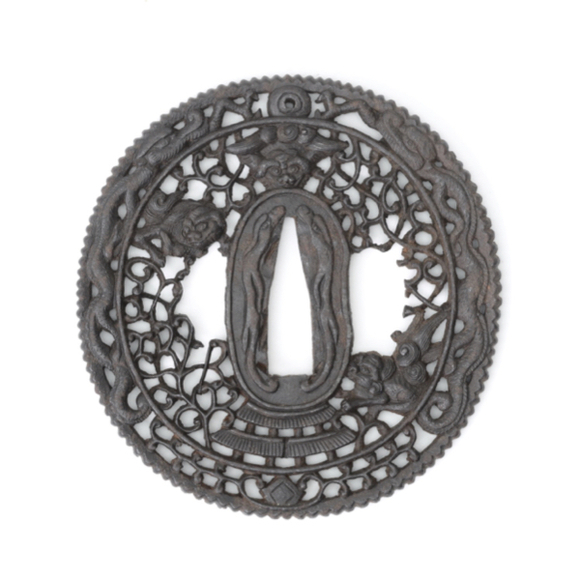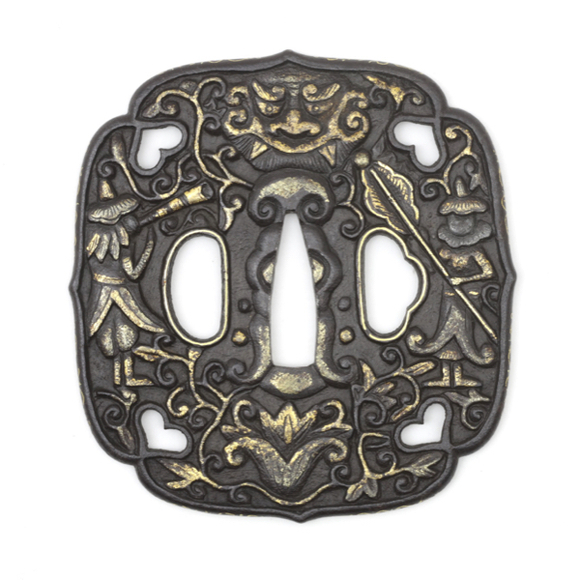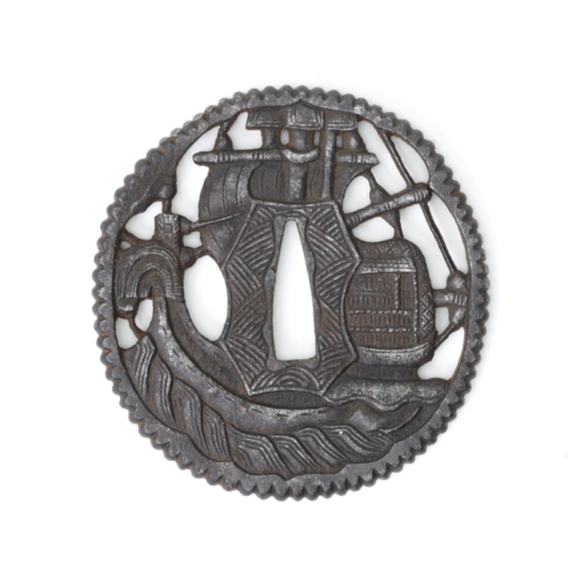Language: Japanese
Source: In common use
Nanako (魚子/斜子) literally means "fish-roe". It is the name for a pattern of punched dots that resemble a certain type of fabric. The work is usually executed on shakudō but is at times seen on other materials as well.
The type of work was done in the Nara period already, as evidenced by some work and a set of stamps used to do the work that were preserved in the 8th century Shōsōin treasure house.
On sword mounts it was popularized by the Gotō school and its many offshoots who were famous for work in black shakudō nanako with golden designs in high relief. This became the standard style of sword mounts worn on formal events during the Edo period.

A shakudō nanako by-knife handle called kozuka.
Listed at Mandarin Mansion in 2021.






